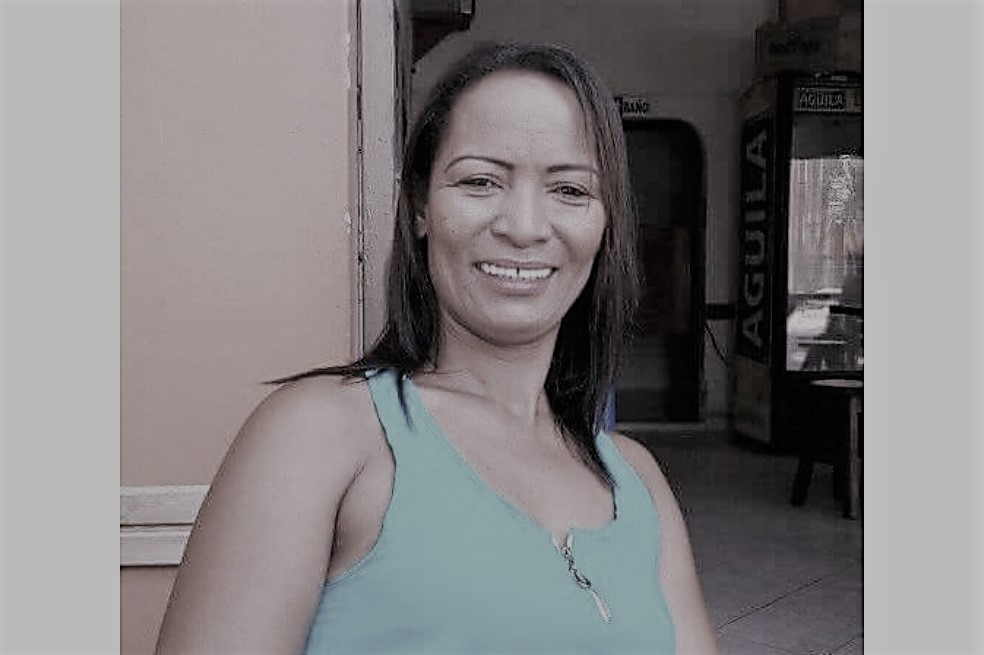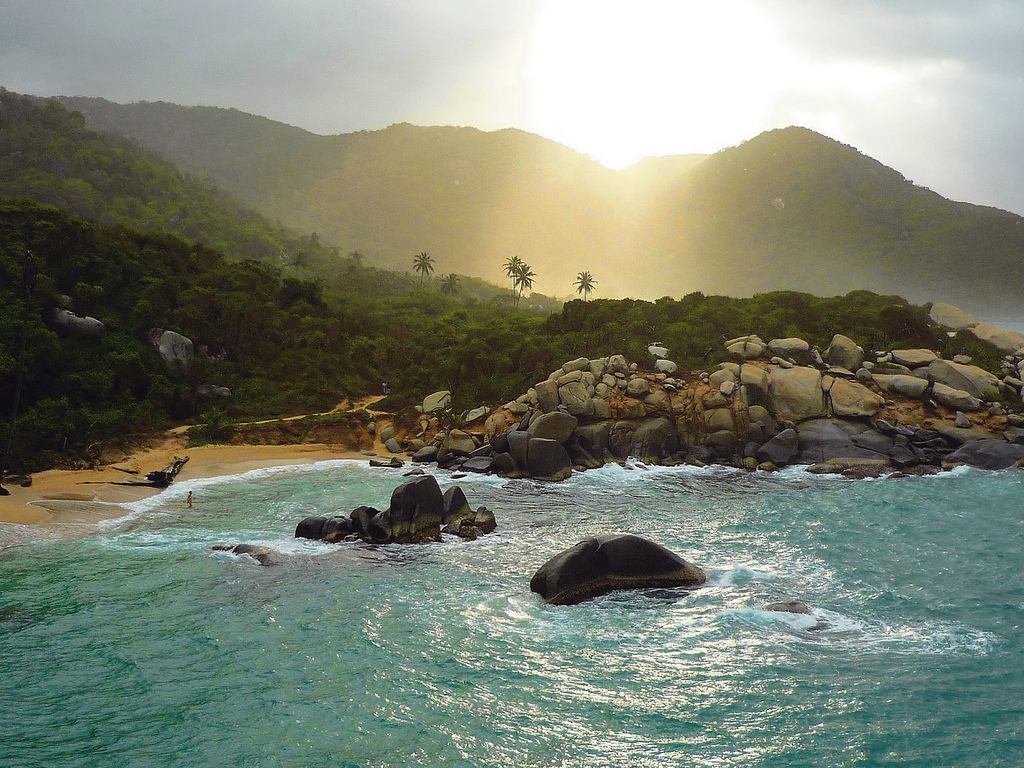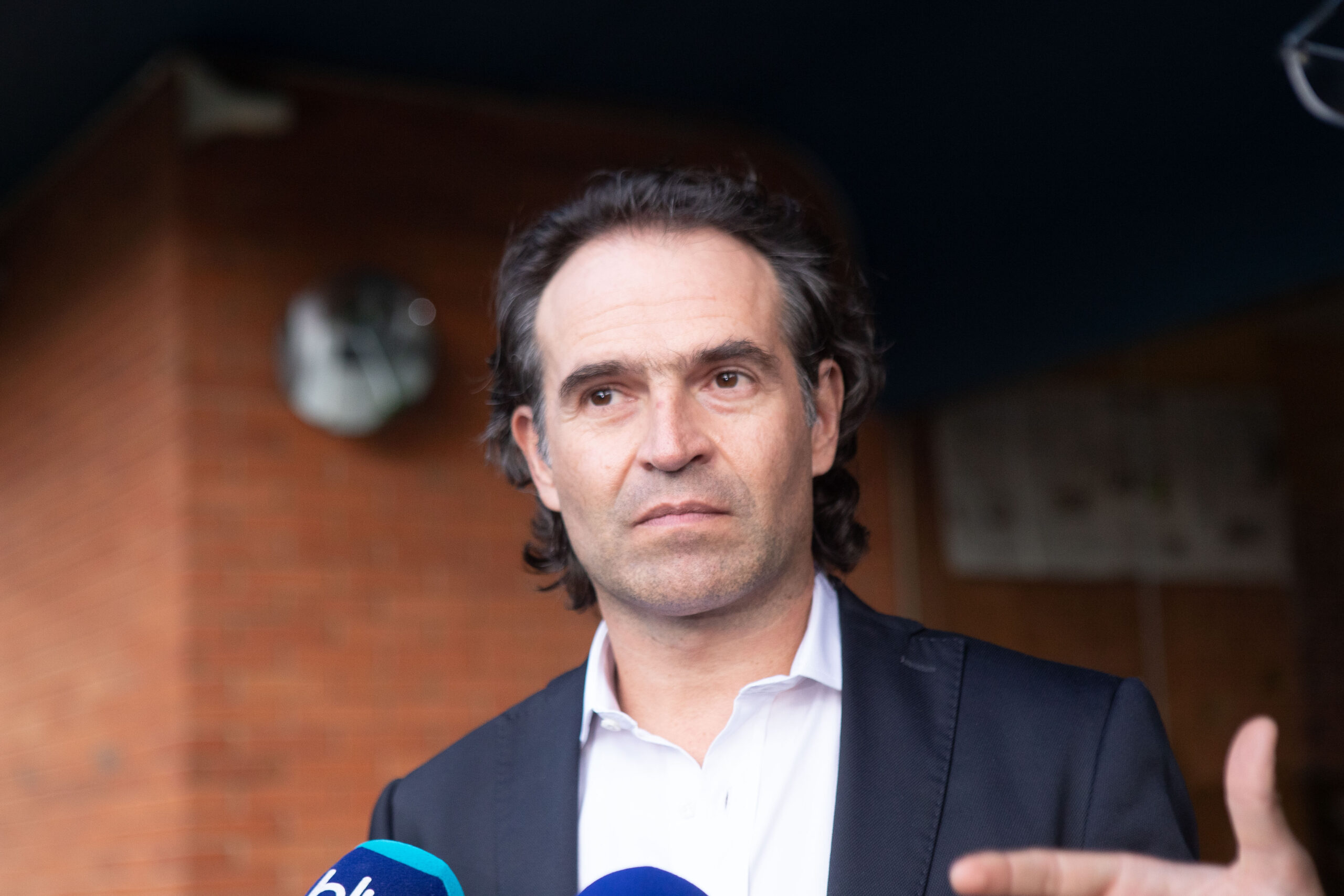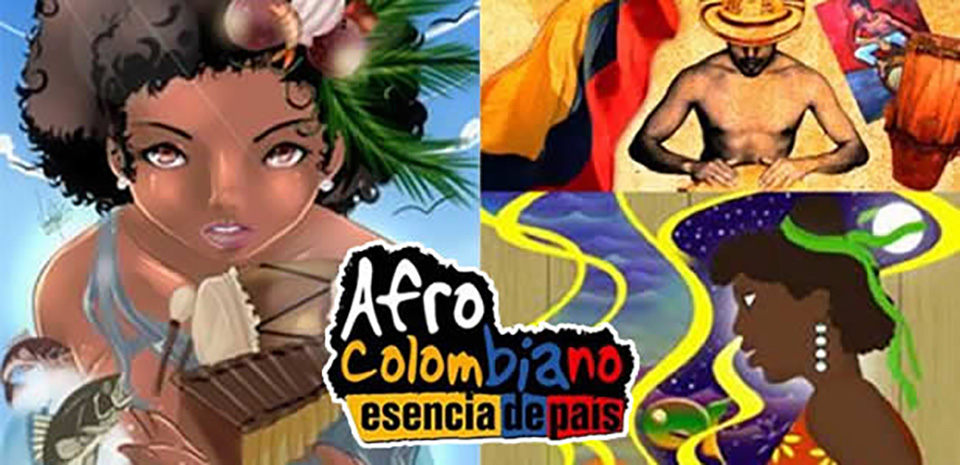
Afro-Colombian Day: Exclusive interviews with Gloria ‘Goyo’ Martínez of ChocQuibTown and journalist Edna Liliana Valencia Murillo.
As the month dedicated to highlighting some of the achievements and challenges faced by Afro-Colombian kicks off, ChocQuibTown singer Goyo and social activist Edna Liliana Valencia Murillo chat to Laura Brown about being black in Colombia.
May 21 is celebrated in Colombia as Afro-Colombian Day (Día de la Afrocolombianidad) – in commemoration of the day slavery was abolished in the country in 1851. Throughout the month of May a number of events are held to honour and acknowledge the achievements of Afro-Colombians and address some of the issues facing this largely marginalised group.
In addition to celebrating the rich cultures of the country’s Afro-descendants, as seen through music, art, literature and history, the day, (which has grown into a month) of ‘Afrocolombianness’ is also a rare opportunity to consider the more difficult questions of cultural identity, visibility and inequality. Afro-Colombian communities have been some of the hardest hit by the country’s conflict, especially those living in and around the Pacific coast, which is a territory heavily favoured by guerrilla groups and drug lords due to the dense jungle terrain that makes it easy to hide in. Other challenges facing Afro-Colombian communities include the lack of access to basic amenities such as healthcare, education, clean drinking water and housing. Furthermore, people in this demographic are estimated to earn two thirds less, on average, than other Colombians.
Based on government figures from 2002, Colombia has the third largest population of black people in the Americas after the United States and Brazil, with an estimated 26% of the population believed to be descended from slaves brought from Africa. The latest official figure however, according to the last census held in 2005, stands at 10.6%, a number which is widely disputed by statistics websites and people within the community who believe this to be a misrepresentation.
Edna Liliana Valencia Murillo
Journalist and social communicator
Edna Liliana describes herself as a proudly Afro-Colombian journalist and social communicator. She is an expert on issues relating to ethnicity and diversity and campaigns for the rights of people in these marginalised groups. Through her career as a journalist, she has been one of the few black women to work as a news presenter on a mainstream TV station in the country, becoming a well-known face on RCN.
“The statistic is false for a number of reasons,” says journalist and activist Edna Liliana Valencia Murillo. “One reason being how people identify themselves. For example, not everyone will say that they are black because they want to avoid being discriminated against. People will say for example that they are from the coast, or that they are mixed, but few will actually say ‘I am black’, even if they are.”
“So during the census when people are asked to classify themselves racially many say they are something else other than black, and that has left the statistics skewed. They say ‘I’m mestizo, I’m mulatto, I’m moreno’ etc.”
When you look at the media it looks as if Colombia is a white society, but this is not true.
– Edna Liliana Valencia Murillo
She explains: “People from the Caribbean will say they are costeño and not black, even though the Caribbean is where the first slaves arrived and so that area and the Pacific coast have the highest number of black people in Colombia.”
Valencia, a former news presenter now working with the United Nations, campaigns for better visibility of minority groups in the country.
Echoing the words of many an overseas visitor who remarks on “how European Colombians look”, especially when looking at magazines and TV programmes, Valencia states: “One can say that there is not a lot of inclusion in Colombian media. The media is focused on just one part of the population, only in the major cities, on the white or mixed (mestiza) population, but Afro-Colombian and indigenous populations, women, LGBT, and the disabled don’t have much access to the media and people in regions outside of the major cities are not covered either.”
The activist continues, “When you look at the media it looks as if Colombia is a white society, but this is not true.”
Gloria ‘Goyo’ Martínez
Singer in ChocQuibTown
Goyo is a singer, songwriter, and producer originally from the Pacific region of Chocó. Along with her group ChocQuibTown, she has won several awards including a Latin Grammy and has performed alongside the likes of Santana, Carlos Vives and more recently, Nicky Jam. One of the most popular contemporary groups in Colombia, they have also taken their sound on tour, performing in a number of countries around the world from Asia to Europe, the Americas and even Australia.
This point of view is shared by singer Goyo of the popular group ChocQuibTown, who says: “This is one of the things we often talk about. In Colombia, when you watch TV you can’t identify yourself because, to put it in a sarcastic form, we don’t eat waffles. We see parents and children [on TV], but the Colombian family in Bogotá eat waffles for breakfast, and this is not our reality, so we feel like we’re always living outside of reality because we can’t see ourselves reflected in the people we see on TV.”
The vocalist, who hails from Chocó in the Pacific region, explains that it is also difficult for people to fit in and survive when they move to new cities because of the geography.
“Living in Chocó for example, we are close to the river and have lots of space, so we can speak loudly, but in Bogotá people live in much closer spaces so we have to be quiet.
“The majority of what we see in the media shows only one way of being, and we have to adapt ourselves to that way. Meanwhile, given the diversity of Colombia, there is not only one way of living and I think the TV and media should show that. We need to see how indigenous people live, how Afro-Colombians live, bogotanos, costeños, everyone. That way, people will have a greater understanding of each other within different cultures and people from groups outside upper class white Colombia can also see themselves represented and feel like they also belong in this space.”
However, this is changing, says the vocalist, adding that we do see more diversity in the media now than in the past.
Many people believe that Colombia is not a racist country, looking at the surface. But there is a lot of prejudice in our society.
– Gloria ‘Goyo’ Martínez
“I was a judge on The Voice Colombia,” she cites as an example. “That was huge exposure. Something like that had never happened before,” she adds, referring to being the first black woman judge on the reality singing show.
While remaining humble and shying away from the title of role model, Goyo believes the fact that she has been able to move out of Chocó – one of the poorest parts of the country – form a successful band, win a Grammy, travel and do a lot of things that many people like her have not been able to achieve, makes people see that maybe they could also accomplish something different.
Apart from problems relating to poverty, poor access to education and the like, many black Colombians feel that another huge barrier to social mobility is racial discrimination. Goyo says it is a very delicate subject which many people don’t like to acknowledge exists.
“Many people believe that Colombia is not a racist country, looking at the surface. But there is a lot of prejudice in our society. People see us as poor, because of where we come from, we come from the ugliest places, and so on, so have formed preconceptions about us before even getting to know us.

Afro-Colombian Day seeks to honor the contributions of Afro-Colombians and vindication of their rights.
“The strongest experience of racism I have had happened to me one day when I was on the bus with my sister-in-law, and we were kicked off the bus. We were already on the bus when a thief jumped on, stuck his hand through to where the driver kept the fares [the old style buses took cash payments], grabbed the money and ran away.
“As the robber happened to be black, the driver started yelling and told all the black people on the bus to get out. Nobody was able to reason with him, so the Afro-Colombian who happened to be on that bus were left stranded at the side of the street for a crime that had nothing to do with them,” recounts Goyo.
She admits, however, that people treat her differently when they realise that she is a famous singer. With this in mind, she says it is important that interest and information relating to the Día de la Afrocolombianidad is growing.
“For those who know about the day, it means many different things,” says the musician. “For me, this is a time to be reminded of a part of history that not many people remember or know about.
“In the past there were very few people talking about it, but now the Día de la Afrocolombianidad, with the events and everything happening around it, has made people understand that it’s not that we are different, but that we have a history that should be shared. And that makes people feel like they have common cause with others, they have more varied points of reference.”
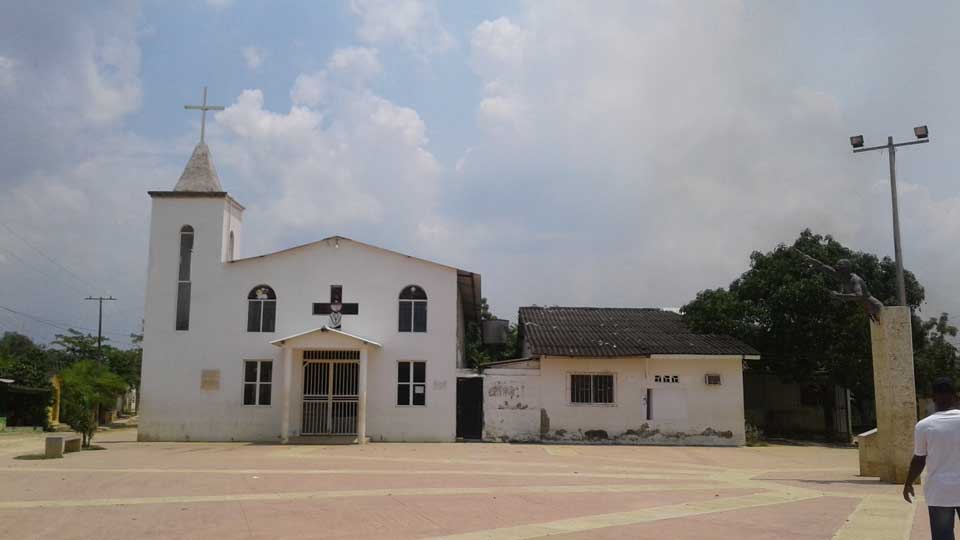
The main church square in San Basilio de Palenque, with a statue of Benkos Biohó to the right. Photo: Laura Brown
Palenque
About an hour and a half away from the coastal town of Cartagena lies an important part of Afro-Colombian history: San Basilio de Palenque, the first free black town in the Americas.
The town was formed by Africans who had been kidnapped from their native land and brought over to Colombia on slave ships where they would be forced to work on plantations and gold mines or in other forms of hard labour.
Led by a man called Benkos Biohó who had rebelled against his captivity, a group of slaves who had escaped the Spaniards established a secret community in what was at the time dense jungle, and refused to return to their ‘owners’. They also worked relentlessly to help other Africans arriving in Cartagena escape and set up other palenques in the area. However, San Basilio de Palenque is the only one that still exists.
The African women, too, played an important role towards the emancipation of slaves through the surprising art of hair braiding, among other things. Not only was it dangerous to speak about escaping, men and women were also not allowed to talk to each other, so the women used to braid messages into the hair of those preparing to flee. Cornrows, for example, might take on the form of a map which would guide the way to freedom and safety. They would also hide seeds in their hair so that when they arrived at the free towns they would be able to plant them, hence providing food for the escapees.
After several failed attempts to reclaim their ‘property’, the Spaniards conceded and eventually issued a decree in 1691 granting the people of San Basilio their freedom, 200 years before slavery was abolished in the US.
The people of Palenque, as the town is most commonly referred to, are proud of their history and have preserved many parts of their original culture. This includes aspects of African religion, even though the people are predominantly catholic, a reminder also of the Spanish influence.
The community’s African roots come through in traditional music and dance, with deep drum beats typical of the continent and lyrics sung in the languages of their ancestors. In recent years palenqueros have been striving to revive their unique language, something similar to Creole, and it is taught to young people at school. One can also see graffiti and slogans painted on walls in the language, which is essentially a mix of Bantu languages from Africa with Spanish.
Festivals celebrating Afro Colombian cultures
• Festival Folclórico del Pacífico – Buenaventura, July
• Petronio Álvarez – Cali, August
• San Pacho – Quibdó, September
• Green Moon Festival – San Andrés, September
• Festival de Tambores – Palenque de San Basilio, October
People and languages of Colombia
Article 7 of the Constitution of 1991 recognises Colombia as a multi-ethnic and multicultural country made up of:
• 111 indigenous groups
• 94 indigenous languages
• 2 Creole languages of African origin – Raizal and Palenquero
• Romani, spoken by 1% of the population
• Spanish
The previous constitution, written in 1886, recognised Colombia as white, catholic and with only one language (Spanish).
Recommended reading from Afro-Colombian writers
• Manuel Zapata Olivella – Changó, el gran putas
• Arnoldo Palacios – Las estrellas son negras
• Mary Grueso Romero – La muñeca negra
• Alfredo Vanin Romero – Los restos del vellocino de oro
• Candelario Obeso – poetry
Music groups
• ChocQuibTown
• Profetas
• Herencia de Timbiquí
• Grupo Niche
• Son Palenque
• Kombilesa Mi
• Zalama Crew

